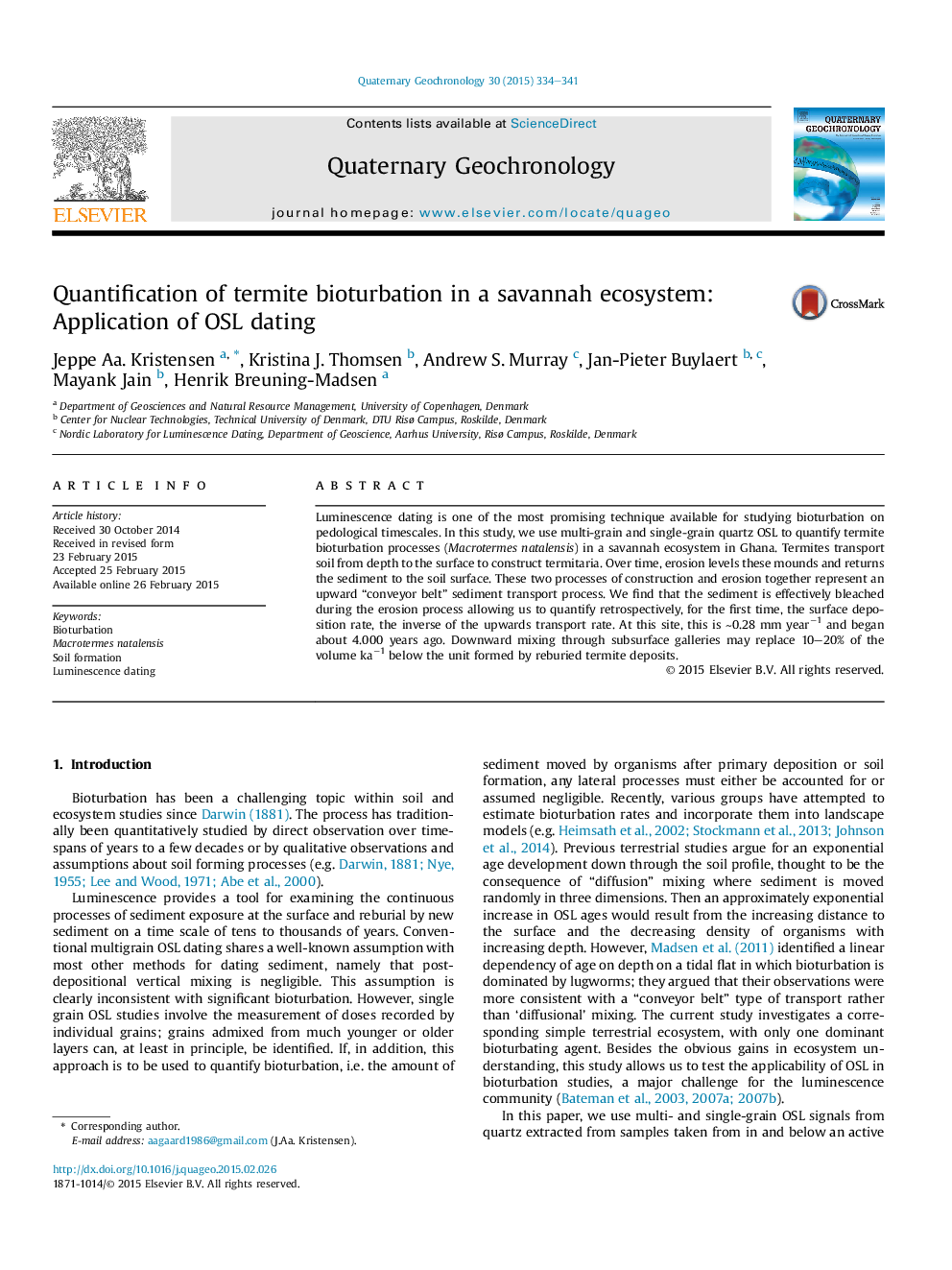| Article ID | Journal | Published Year | Pages | File Type |
|---|---|---|---|---|
| 6442581 | Quaternary Geochronology | 2015 | 8 Pages |
Abstract
Luminescence dating is one of the most promising technique available for studying bioturbation on pedological timescales. In this study, we use multi-grain and single-grain quartz OSL to quantify termite bioturbation processes (Macrotermes natalensis) in a savannah ecosystem in Ghana. Termites transport soil from depth to the surface to construct termitaria. Over time, erosion levels these mounds and returns the sediment to the soil surface. These two processes of construction and erosion together represent an upward “conveyor belt” sediment transport process. We find that the sediment is effectively bleached during the erosion process allowing us to quantify retrospectively, for the first time, the surface deposition rate, the inverse of the upwards transport rate. At this site, this is ~0.28 mm yearâ1 and began about 4.000 years ago. Downward mixing through subsurface galleries may replace 10-20% of the volume kaâ1 below the unit formed by reburied termite deposits.
Related Topics
Physical Sciences and Engineering
Earth and Planetary Sciences
Geochemistry and Petrology
Authors
Jeppe Aa. Kristensen, Kristina J. Thomsen, Andrew S. Murray, Jan-Pieter Buylaert, Mayank Jain, Henrik Breuning-Madsen,
